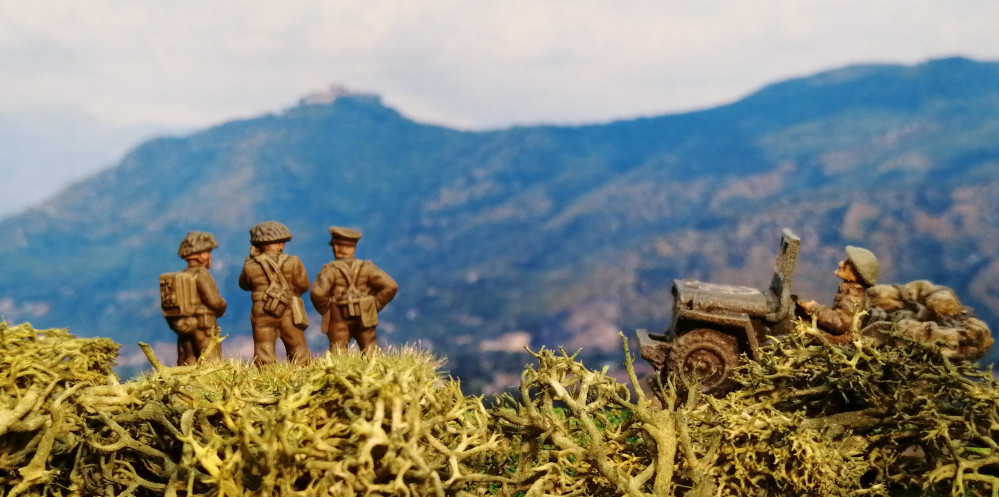
75th Anniversary of the Battle of Monte Cassino and Northern Italy (Gaming The Battles)
4th Battle of Monte Cassino
Following the unsuccessful third attempt to capture Cassino, the Allies needed time to reorganise and resupply their forces to enable them to punch through and relieve the US VI Corps, still encircled at Anzio some 80km to the North. The early spring conditions in Italy also forced a degree of caution on any assault as the wet weather made ground conditions far more suited to defence. General Sir Harold Alexander therefore took time to better coordinate the attack and reorganise his forces.
Alexander’s first move was to shift the bulk of Lieutenant-General Sir Oliver Leese’s British 8th Army across the spine of Italy from the Adriatic coast and to take up positions to the right of Lieutenant General Mark Clark’s US 5th Army. The remaining British Divisions that were part of US 5th Army (with the exception of those stuck at Anzio) were also transferred to British 8th Army, finally resolving the logistical problem US 5th Army had of trying to supply troops equipped with US and British army equipment.
Once in position, US 5th Army had US II Corps on the West coast with the French Expeditionary Corps to the right ready to move up into the Aurunci Mountains. To the right of the FEC, British XIII Corps sat ready to push up Route 6 into the Liri valley while Polish II Corps were tasked with accomplishing what the British 4th Indian Division had failed to accomplish twice, namely loop around Cassino to the East, assault up Snakeshead Ridge and take the Monastery. Once the German defenders had been defeated, US VI Corps were tasked to break out of their Anzio beach head and cut off the retreating German 10th Army.
The entire offensive was codenamed Operation Diadem. Its primary goal was to break through to Rome but its size and scope was also designed to tie down as much of the German forces in Italy as possible to improve the chances of the planned Normandy landings. In all, the initial offensive was planned to take place across nearly a 30km front, from the Western Italian Coast stretching inland along the Rapido and Garigliano rivers.
Reorganising the units along the front was carried out in secrecy to hide the intentions from Kesselring, still commanding the German defences in Italy. To reduce the chance of detection, troop movements were kept to small units at a time and changes along the front took place at night. British 8th Army left behind dummy tanks and vehicles along the Adriatic Coast to confuse enemy aerial reconnaissance and shift all but one Corps to the other side of the Appenines. To further confuse the defenders, US 36th Division were sent on amphibious assault training and dummy radio traffic was used indicating locations North of Rome. The deception was aimed at keeping German reserves further to the North. Overall, the deception was largely a complete success as Kesselring maintained his reserve close to Rome and even after the assault was launched, the Germans believed that they were facing six Allied Divisions at Cassino, rather than the 13 that had actually gathered there.
The start of the assault was sounded on 11th May at 23:00 by over 1600 artillery guns from the US Fifth and British Eighth Armies bombarding the German defensive positions. Within two hours, the Allied troops began their advances.
On daybreak of the 12th May, by the coast and along route 7, the US II Corps were making slow progress, meeting strong resistance from the defenders. The French Expeditionary Corps (FEC) to their right were making better progress into the Aurunci Mountains and had largely achieved their objectives. As the morning progressed, the FEC were beginning to fan out to the East to meet up with the British Eighth army who were tasked with pushing up Route 6 with a view to encircling the remaining German defensive positions in the mountains.
The British Eighth Army’s XIII Corps had met significant resistance as they tried to cross the Garigliano river but by day break, the British 4th Infantry Division and 8th Indian Division had succeeded in creating bridge head and, more significantly, the engineers of the 8th Indian had managed to bridge the river allowing the 1st Canadian Armoured Brigade to cross and fully engage.
The Polish II Corps had advanced up Snakeshead ridge and met the fierce resistance of the 4th Fallschirmjager dug in around the monastery. Once again the allies assaulted point 593 and briefly managed to take the position before being repelled by a German counterattack. This was a pattern that would continue for 3 days as the Polish repeatedly assault the German positions before being driven back by counter attacks. During this time, the Polish II Corps would lose nearly 3,900 men.
[In the pictures below, you can see Allied mortar teams around Cassino launching their bombardment, German MG teams dug in around the ruins of the town and German mortar teams returning fire]
As the 12th May progressed, the central thrust from the XIII Corps began to gain ground and held against increasingly desperate German counter attacks. On both flanks, attrition on both sides was high however given the significantly larger manpower of the Allies, the strain was increasingly showing on the defenders.
By the morning of the 13th May, the US Fifth Army on the coast was starting to make progress and push the defenders back. The FEC had achieved their objectives and captured Monte Maio. They were now begining to turn Eastward as planned and provide increasing support to the British XIII Corps still making headway up Route 6 in the Liri Valley. Kesselring was becoming increasingly concerned about holding the positions and threw all of his remaining reserves into the Liri Valley to, at the very least, hold open the rout of retreat to an already prepared defensive line 13KM to the North, the so called Hitler line.
Over the coming few days, all elements of the Allied assault continued to make gradual progress against the determined defenders. The Moroccan Goumiers of the FEC particularly excelled in the rough mountain country and carried out a number of daring night attacks that the defenders found difficult to resist. Lieutenant General Mark Clark, commander of the US Fifth Army, was particularly complimentary writing ‘[The towns of] Cerasola, San Giorgio, Mt D’Oro, Ausonia and Esperia were seized in one of the most brilliant and daring advances of the war in Italy… key to the success of the entire drive to Rome’.
[In the pictures below, you see Shermans supporting the advance through the town of Cassino and Polish troops assaulting up Snakeshead Ridge]
The British 78th Infantry Division joined the main XIII Corps assault from reserve on the 15th May. Rather than push forward up the Liri Valley, they turned East and began to isolate Cassino. This act made retreat increasingly difficult for the defenders and effectively turned the battle as Kesselring began to realise that holding on to Cassino and the Gustav line was now almost hopeless.
Polish II Corps, who had called off their assault on Monte Cassino two days earlier launched their second assault. Once again the troops were met with a near constant artillery and mortar bombardment as they tried to cross the open ground. The fighting was once agin fierce, up close and desperate. But, with the supply lines from the Liri valley increasingly getting restricted and the route of retreat gradually closing, Kesselring finally ordered the withdrawal from Monte Cassino. As night fell on the 17th, the German defenders quietly slipped away leaving the Polish II Corps alone on the high ground. By the early hours of the 18th May, Polish troops linked up with British troops from the 78th Infantry Division in the Liri Valley.
Such was the devastation that the Polish II Corps had suffered, ‘it took some time to find enough men with the strength to cover the remaining few hundred metres to the ruined monastery and capture the summit’. When they got there, they found around 30 wounded German defenders who were too injured to move. As sun rose over Monte Cassino on 18th May, men from the Polish 12th Podolian Cavalry raised the Polish flag on the hilltop. After 4 months of fighting, Monte Cassino had finally fallen.
[The pictures below show the level of devastation wrought upon Cassino and the surrounding landscape]









































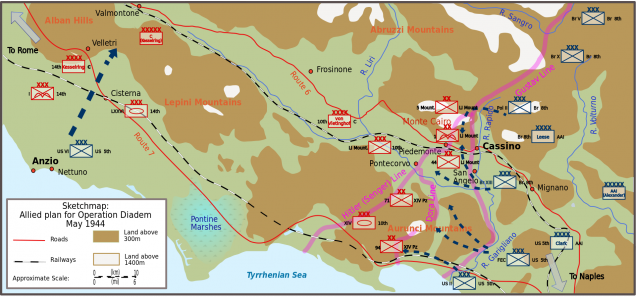
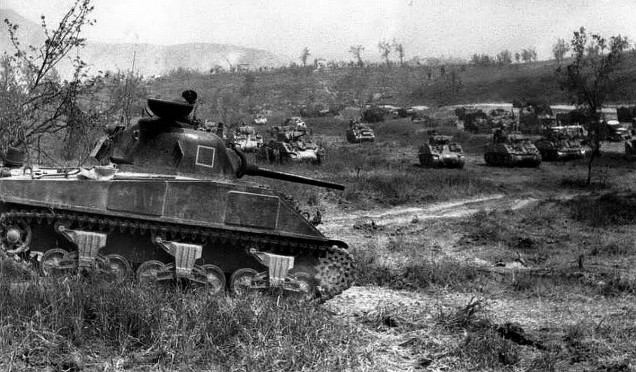
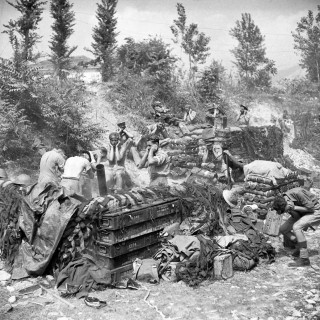

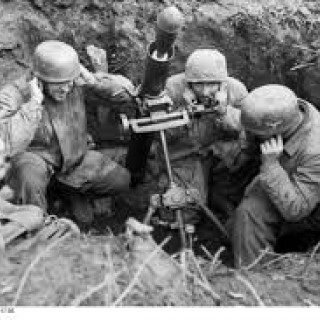
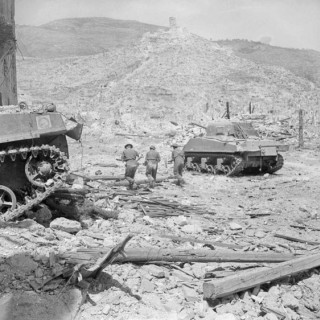
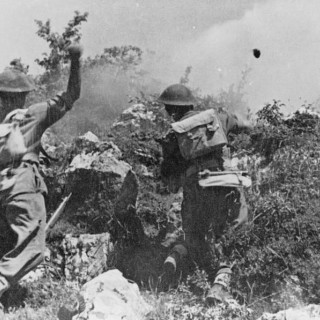
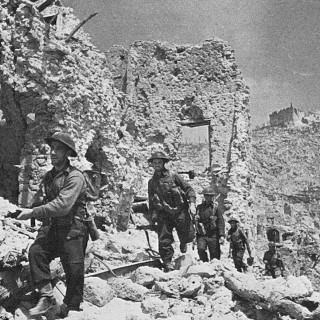
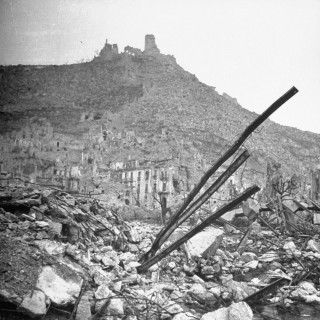
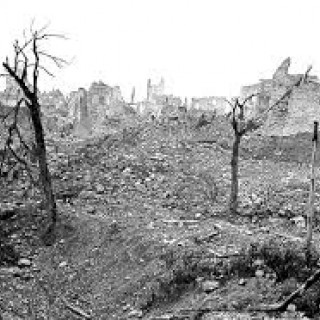
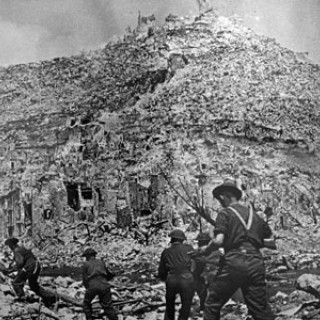
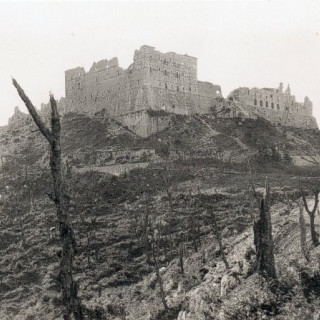


































Leave a Reply